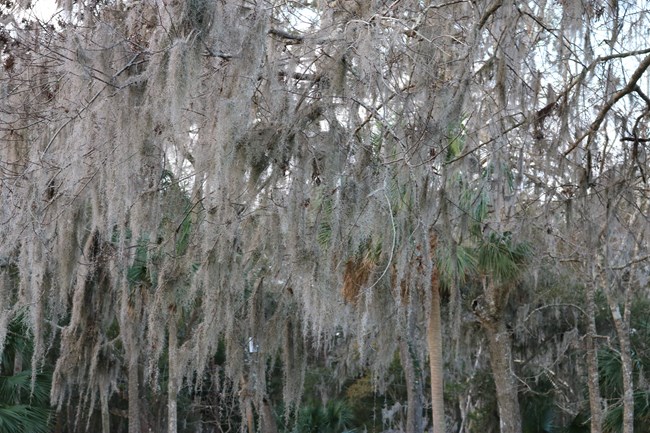
NPS Photo / Wendy Wright
Background
Over 3,000 plant species are distributed throughout the Southeast, and they are found within 180 vegetation communities in Southeast Coast Network park units. These communities vary widely across four main ecoregions: the Southern Coastal Plain, Southeastern Plains, Middle Atlantic Coastal Plain, and Piedmont.
Vegetation is a vital part of ecosystems throughout the world, and serves as a foundation for terrestrial food webs and habitat for animals. Vegetation is important to the environment because it produces oxygen, helps to cycle energy and nutrients throughout an ecosystem, and improves water quality, along with helping to moderate flooding and land erosion. Vegetation can even affect our climate!
Vegetation communities have characteristics that are constantly changing, such as how they are distributed, what they are composed of, and what type of land they cover. These changes can occur naturally over time, or they can be caused by environmental stressors. The main natural disturbances are caused by weather, such as hurricanes or drought. Environmental stressors, such as pollution, can heavily alter vegetation, damaging the entire ecosystem in the process. Vegetation is not only altered by natural processes, but by human changes as well. These changes include: deforestation, stopping naturally occurring fires, dividing the land into smaller fragments, changing the natural flow of water, and introducing species that are not native in an area which can harm the native organisms.
Monitoring Objectives
The goal of vegetation community monitoring is to determine the status of and trends in plant species abundance, coverage, diversity, and distribution in Southeast Coast Network parks.
For more information on the scientific methods used for terrestrial vegetation community monitoring, please see Terrestrial Vegetation Monitoring in Southeast Coast Network Parks: Protocol Implementation Plan (Boyle et al. 2019).
For more information about vegetation monitoring at the Southeast Coast Network, contact Forbes Boyle.
Source: NPS DataStore Collection 3913. To search for additional information, visit the NPS DataStore.
Resource Briefs and Web Articles
Last updated: May 21, 2024
